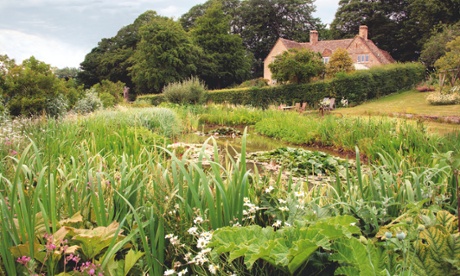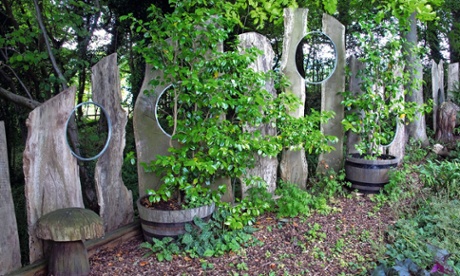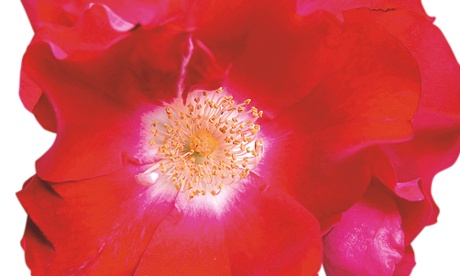
Relentless, hot and hungry, desperate for water, pitilessly exposed to the cruelty of the elements... Actually, there’s only so far you can go in drawing comparisons between a Cotswolds country garden and a 150-mile endurance race across the Sahara. Yet these are the unlikely twin passions of Celia Hargrave, a remarkable gardener with seemingly superhuman energy.
Along with the notorious Marathon des Sables, reputedly the toughest run on Earth, Hargrave has completed numerous marathons and 24-hour track events, a 100km “dash” across the Himalayas, and celebrated her birthday by running round the coastline of the British Isles.
She is also a magistrate, village festival organiser, grandmother, and runs an arts organisation and a lunch club for elderly and housebound people in her area. Yet she still finds time to garden every day at Trench Hill, clocking up 50-60 hours a week, and even opens the garden for the National Gardens Scheme, a charity that raises money by offering the public access to hundreds of outstanding gardens.
“This is not a garden I can drift round with a trug and a straw hat,” she says. Nor would she wish to. She enjoys the physical labour required, though, as she approaches her 66th birthday, she might sometimes wish the soil was a tad less stony.
Over 18 years, her three-acre plot has developed from largely open field to a complex farrago of flower and foliage borders, formal seating areas and managed wilderness. There is an impressive veg plot, stuffed with produce, with gooseberries the size of golf balls. Two wildlife ponds are surrounded with butterfly-friendly planting. For the past few years, Hargrave has let the grass grow between the trees in the orchard, and was delighted to see the arrival of cowslips and fritillaries, daisies and spotted orchids. At the top of the garden, a woodland walk planted with 30,000 snowdrops leads to a touching memorial to her mother, a cool, quiet place with long views over the valley. There’s a “moon fence” she acquired from a show garden. Then there’s a play area for her grandchildren, and – in the unlikely event of her sitting down – a delicious summerhouse that was once the cricket pavilion at Slad, where you might imagine yourself taking tea with Laurie Lee.
Every inch is densely planted to provide a succession of colours throughout the year. “I think we can finally say it is an all-seasons garden,” she says. “I so enjoy seeing it change from the white of the snowdrops and hellebores to the yellow of the spring garden, to the bright colours of high summer.” Right now, swaths of roses festoon a large, curving pergola and clamber over arches and into trees. “I’ve tried to make a garden of abundance, where there’s always something having its moment of glory, but also a garden that works within the landscape.”

There is no chemical assistance of any kind – the garden is run on strictly organic lines; and she has propagated the lion’s share of the plants herself. “It’s a matter of economy as much as anything,” she says. “It would be far too expensive to keep buying new plants. I’m very keen on things like heucheras and pulmonarias, which make good space fillers.”
Hargrave could make life much easier for herself. No one has to have quite so many pots – a phalanx of fuchsias ranged in front of the house, and perhaps some 40 more containers at the side. Instead, at a time of life when others might think of simplifying their gardens, she chooses to keep on developing hers, adding a new feature every year.
One pond has doubled in size, and having to lose some ailing trees, she is busy creating a copse with native planting. She’s exceptionally pleased with the centrepiece, a dragon seat carved from the trunk of a huge felled beech, by tree surgeon and first-time sculptor Jasper Drake.
“I have to have something creative on the go all the time,” Hargrave says. “Otherwise, it would just be maintenance – like doing the ironing. If you did nothing but deadhead all week you’d go mad. I know what I want from this garden – I can feel it inside. I was always good at creating things at school, at displaying things to good effect, so I feel it intuitively when I’ve got it right.
Hargrave says she’d hate to have a garden designed by someone else: “I think it is something that evolves with you. The most important thing about any garden is that you should love it. It doesn’t matter what anyone else thinks, and it certainly doesn’t matter if you make mistakes – you can always change things later. If you love your garden, if you feel you own it, you can go at your own pace and feel content.”
Hargrave’s summer favourites
“My husband chose this bright red rose for its vibrant colour, which he thought would add a splash against the softer tones of the others.”

“This is aptly named, because of the way it changes in colour from golds to pinks. I love it.”
“This is one of the stars of the pink rose border pergola, and is, I think, a very romantic rose.”
“Wild orchids have gradually seeded themselves around the pond and in the long grass under the fruit trees. This year I was delighted to spot a wild pyramid (Anacamptis pyramidalis) orchid – the first to arrive in the garden.”
“Anthemis tinctoria is a very useful, daisy-like flower that forms a great swath along the front of the yellow rose border. Behind it I grow the giant scabious (Cephalaria gigantea), which certainly lives up to its name, requiring lots of space, but is great to give height and colour.”
• Trench Hill in Gloucestershire opens for the National Gardens Scheme, on 30 August and 13 September (11am-6pm).







